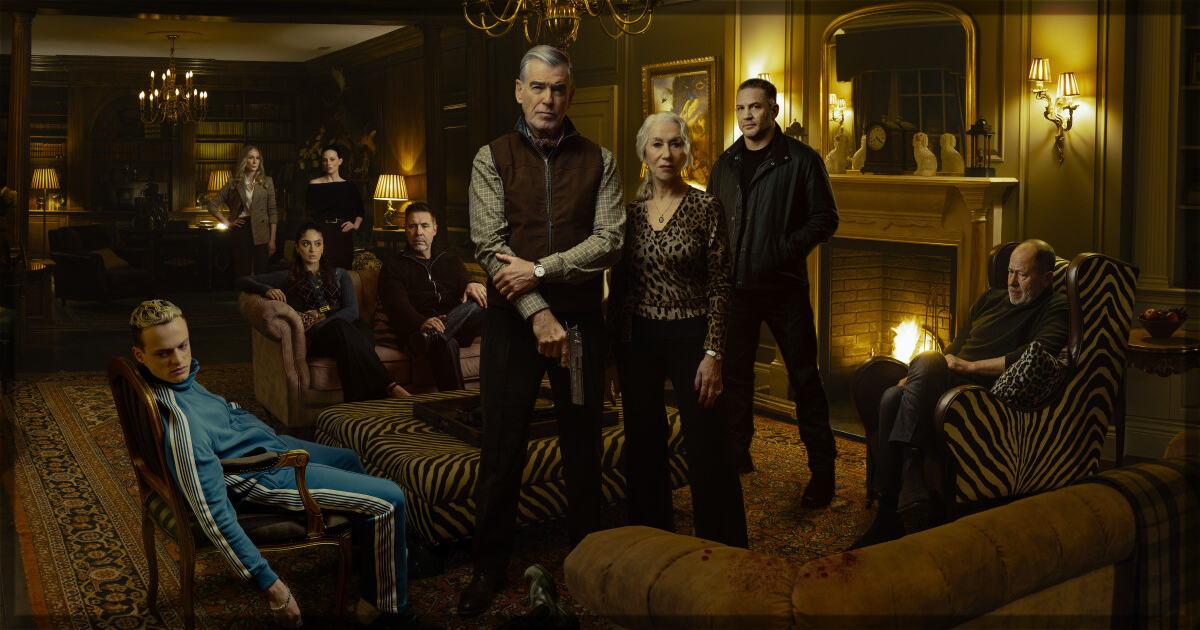British gangster content has become a popular pastime for entertainment media enthusiasts. There’s a heightened quality that’s proven uproariously entertaining for viewers. British gangster classics such as Snatch, Lock, Stock & Two Smoking Barrels, Layer Cake, and the old-school The Long Good Friday proved this correct. One commonality amongst some of those films is director Guy Ritchie. His voice in the gangster genre is so distinct that it has become beloved by fans since his first film in 1998. In recent years, Ritchie has made a pivot to television, both creating, executive producing, and directing episodes of some of his shows. In the Paramount+ series MobLand, Ritchie utilizes his executive producer skills.
Created by Ronan Bennett (The Day of the Jackal), the series finds its distinct gangster voice. Yet simultaneously, the dialogue, and especially the violence, has the classic Guy Ritchie flavor. Before we go any further, it’s best to tell the story of this vibrant and violent series. That particularly means highlighting the talented ensemble.
MobLand tells the story of the powerful London crime family, known as The Harrigans. Led by Conrad (Pierce Brosnan), the series follows them at war with a rival family, the Stevensons. That is while dealing with his duplicitous wife, Maeve (Helen Mirren), and her dangerous agenda. Thankfully, in the Harrigans’ corner is the fixer Harry Da Souza (Tom Hardy), who will solve any problem by any means necessary. What follows is a story about power, control, and what someone is willing to do to maintain both. To make something clear, the series is something that certainly won’t be for everyone.
One of the season’s biggest strengths could serve as a deterrent for many. No one in MobLand could be called “likable.” These are all evil people, willing to do bad things to achieve their goals. There’s nothing about these people to root for as they’re truly detestable in every decision they make. In the wrong actor’s hands, those characters can make the series unwatchable. With no one to root for, how could audiences connect to any of these characters? Thankfully, this cast makes it relatively easy to become engaged in the story and willing to go along with the violence.
Starting with both Pierce Brosnan and Helen Mirren, their characters can be described as vile. Brosnan knows how to apply a charm to any role with a sinister twinkle in his eye. As the series starts, it’s hard to tell whether Brosnan is a friend or foe. When a more villainous side unveils itself (including some disgusting dialogue said to other characters), audiences both hate him and love him at the same time. In contrast, Mirren is leaning into a more heinous and wicked side. Maeve is someone who is looking out for her own interests, saying and doing whatever it takes to get what she wants. That is especially to get her psychopathic grandson Eddie (Anson Boon) to take over the Harrigan empire. Watching both those performances, you can’t take your eyes off them, being unsure of what they’ll say or do next. It’s exciting, scary, and makes for addictive television in the process.
Performances as big as Mirren, Brosnan, and the entire Harrigan ensemble need a counterbalance. A subtle tension has to offset the significant presence those performances require. Tom Hardy’s performance as Harry De Souza beautifully serves that purpose in MobLand. To fully disclose my personal preferences, Hardy has been a favorite actor of mine. His subdued menace has always resonated with me, and his performance here is no exception. De Souza must always serve as someone in control of any situation, regardless of its severity. In MobLand, Hardy amplifies that subdued tense character, creating someone fascinating. Viewers know he’s capable of violence, but never know when he may snap and show it.
If there’s any criticism of MobLand, it has to go to the cliches of the story. There is not one ounce of originality in its narrative path. If you have seen one gangster story (or are just a fan of that subgenre), you could predict several story beats. Such predictability could serve as a deterrent for many. That can be particularly attributed to the supporting performances surrounding our leads. Just to make something clear, that is not a criticism of the actors in those supporting roles. That means those performances are merely archetypes over fully fleshed-out characters. Whether it be the worried wife, wild card grandson, or rival gangster and federal agents, there isn’t much depth. They serve as nothing more than pieces on the board, moving the story forward.
Viewers’ mileage on MobLand may vary throughout their viewing of the (possible) first season. There’s a level of familiarity that could detract from the enjoyment of many viewers. The levels of violence and vulgarity (by design) are meant to test audiences. Its severity could prove grueling, making it hard to know who viewers should root for. What helps make the series an addictive prospect is its central performances. Each one delivers a series of tension and breadth of character, balanced against a quiet menace in others. This type of combination helps make something highly entertaining in the process. Now, with all episodes streaming, one could easily binge through this fast-paced television series. That is, if the audience is willing to commit to the brutal lengths that Mobland goes to tell its story.
MobLand is now streaming in full on Paramount+.
Learn more about the show, including how to watch, at the Paramount site for the title.


